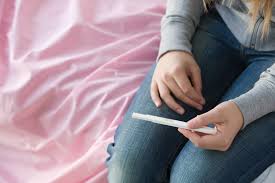Schoolgirl pregnancies cost Panama $525 million in a year

Teen pregnancies in Panama in 2019 represented a cost to the country of $525 million says a report on socio-economic consequences of teenage pregnancy in Panama , prepared by the UN Population Fund.
José Manuel Pérez a representative in Panama of the Population Fund, said that the amount is equivalent to what the State would lose if the Canal stopped working for more than three months. “If measures are not taken, the consequences of not addressing the issue can generate irreversible economic losses,” he said
Of that amount, $495 million correspond to the socioeconomic cost, which includes factors such as the opportunity cost per work activity, the opportunity cost of work income, and the opportunity cost per job.
The health cost includes $15.3 million for social loss due to maternal mortality and health care expenses for adolescent pregnancies. Also, on the tax impact, $15 million for foregone income.
In 2019, the Panama Canal Authority transferred $1.824.1 billion to the national treasury. The figure is equivalent to almost $5 million per day of operation of the Canal, said Perez.
Every action to prevent teenage pregnancy is an act to ensure the development and growth of the country. “If measures are not taken, the consequences of not dealing with adolescent pregnancy can generate irreversible economic losses, both for girls and adolescents and for the country as a whole,” said Pérez,
The reports presented by Unfpa and the Ministry of Health (Minsa) show alarming figures for teenage pregnancies since the fertility rate for young people between 15 and 19 years of age is 67.2 live births for every 1,000 women.
Statistics from the Comptroller General of the Republic show that in 2019 there were 11,809 live births in adolescent mothers (15 to 19 years old)
The resident coordinator of the United Nations system in Panama, Cristian Munduate, remarked that teenage pregnancy is linked to poverty and the reproduction of social inequalities; at the same time, it reflects situations of sexual violence and abuse, and that early motherhood is linked to the difficulties in creating a protective and stimulating home environment for children.
Last year, according to data from Minsa, 9,724 young people between the ages of 10 and 19 entered prenatal care in the midst of the Covid-19 pandemic – at their dependency facilities. There are 5,072 young people more than those who entered control in 2019 when there were 4,652. These statistics do not include the population that received care in the Social Security Fund or in private clinics.
Sex education
Currently, in a National Assembly Committee bill, 657 is under analysis, aiming to establish an education program for the prevention of pregnancies in minors, sexually transmitted infections, and sexual crimes.
The legislative initiative was presented on August 4 by independent deputies Gabriel Silva and Juan Diego Vásquez.
Since 2008, there have been three controversies unleashed in the country around comprehensive sexual education, from the presentation before the National Assembly of different bills that sought, to adopt public policies inherent to the issue reports La Prensa. They have all been stalled by church groups who bring thousand of protestors on the streets.





